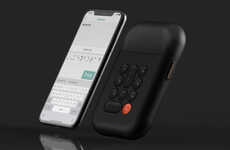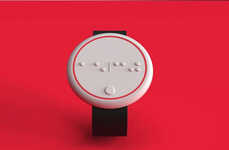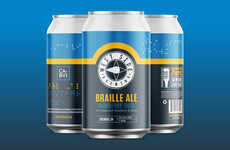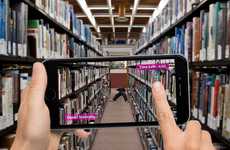
'Braille Neue' Can Be Both Seen and Felt
Joey Haar — April 3, 2018 — Art & Design
References: kosuke.tk & fastcodesign
Designer Kosuke Takashi has developed a font called 'Braille Neue' that harmonizes the standard Roman alphabet with braille, the tactile alphabet used by people with vision impairments. The new font correlates every braille character directly with its Roman counterpart in the alphabet and its Arabic partner in the numerical system, creating a one-to-one ratio that can make any piece of text simultaneously legible in both written English and braille.
Braille is only a lettering system (as opposed to an entirely different language), so every character in braille already directly indicates a letter in the Roman alphabet. However, the tactile representations of those characters aren't designed to feel like the shape of the visual letters — an "A" in braille is not a series of dots in the shape of an "A", in other words. Braille Neue creatively shapes its Roman characters to conform to standard braille, creating a doubly useful font that's inclusive of people with vision impairments.
Image Credit: Kosuke Takashi
Braille is only a lettering system (as opposed to an entirely different language), so every character in braille already directly indicates a letter in the Roman alphabet. However, the tactile representations of those characters aren't designed to feel like the shape of the visual letters — an "A" in braille is not a series of dots in the shape of an "A", in other words. Braille Neue creatively shapes its Roman characters to conform to standard braille, creating a doubly useful font that's inclusive of people with vision impairments.
Image Credit: Kosuke Takashi
Trend Themes
1. Hybrid Braille Typefaces - Creating fonts that combine the Roman alphabet with braille has the potential to enhance accessibility for people with vision impairments.
2. Inclusive Typography - Designing typefaces that prioritize accessibility through innovative methods like braille integration can set new standards in typography.
3. Multi-sensory Communication - Simultaneously conveying information through tactile and visual means can create new opportunities for multi-sensory communication.
Industry Implications
1. Design - Incorporating accessibility features in designs like typography can help businesses reach and serve a wider audience.
2. Education - Hybrid braille typefaces may be used to enhance learning opportunities for visually impaired students in academic and instructional materials.
3. Technology - Integrating hybrid braille typefaces for websites, digital screens and mobile applications can improve user accessibility and experience.
6.6
Score
Popularity
Activity
Freshness























